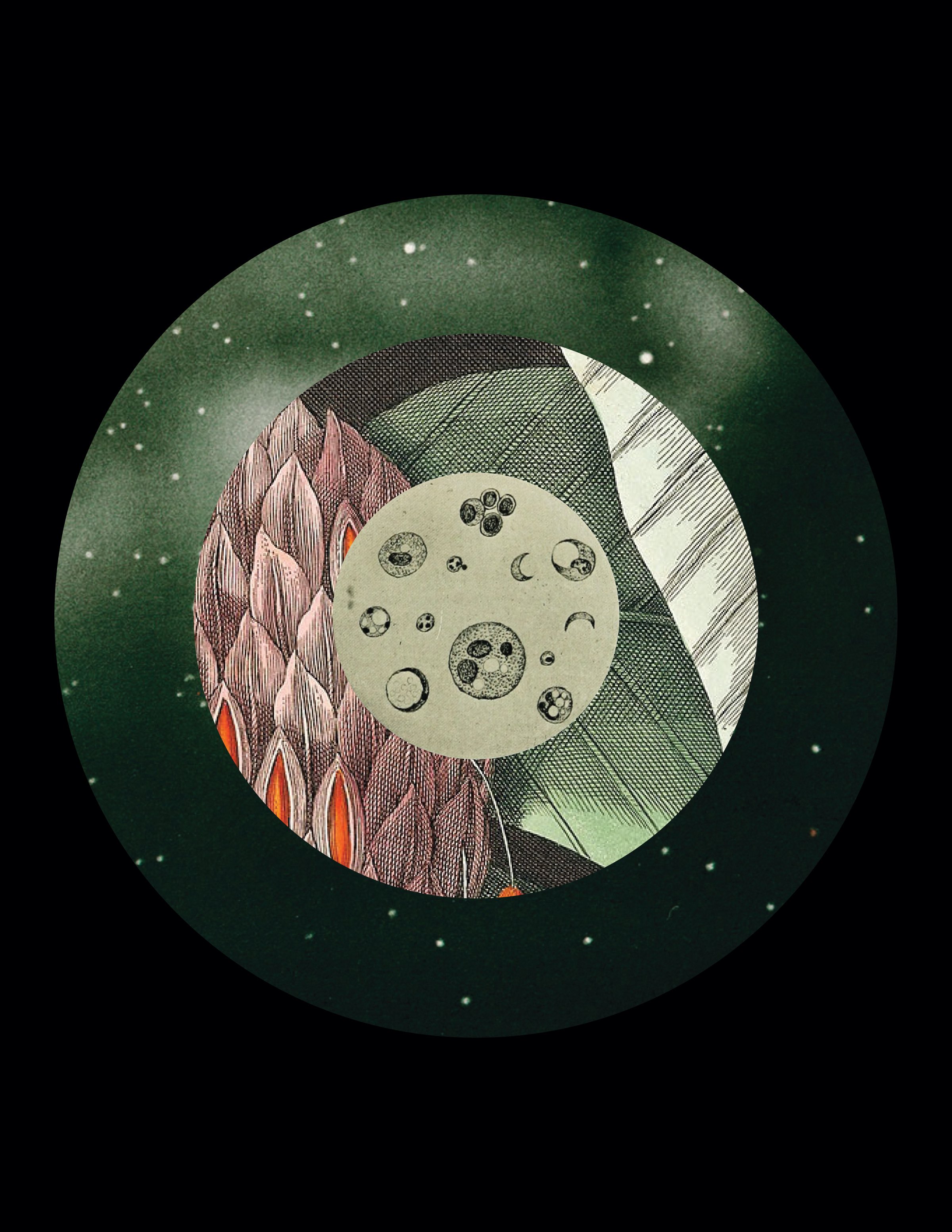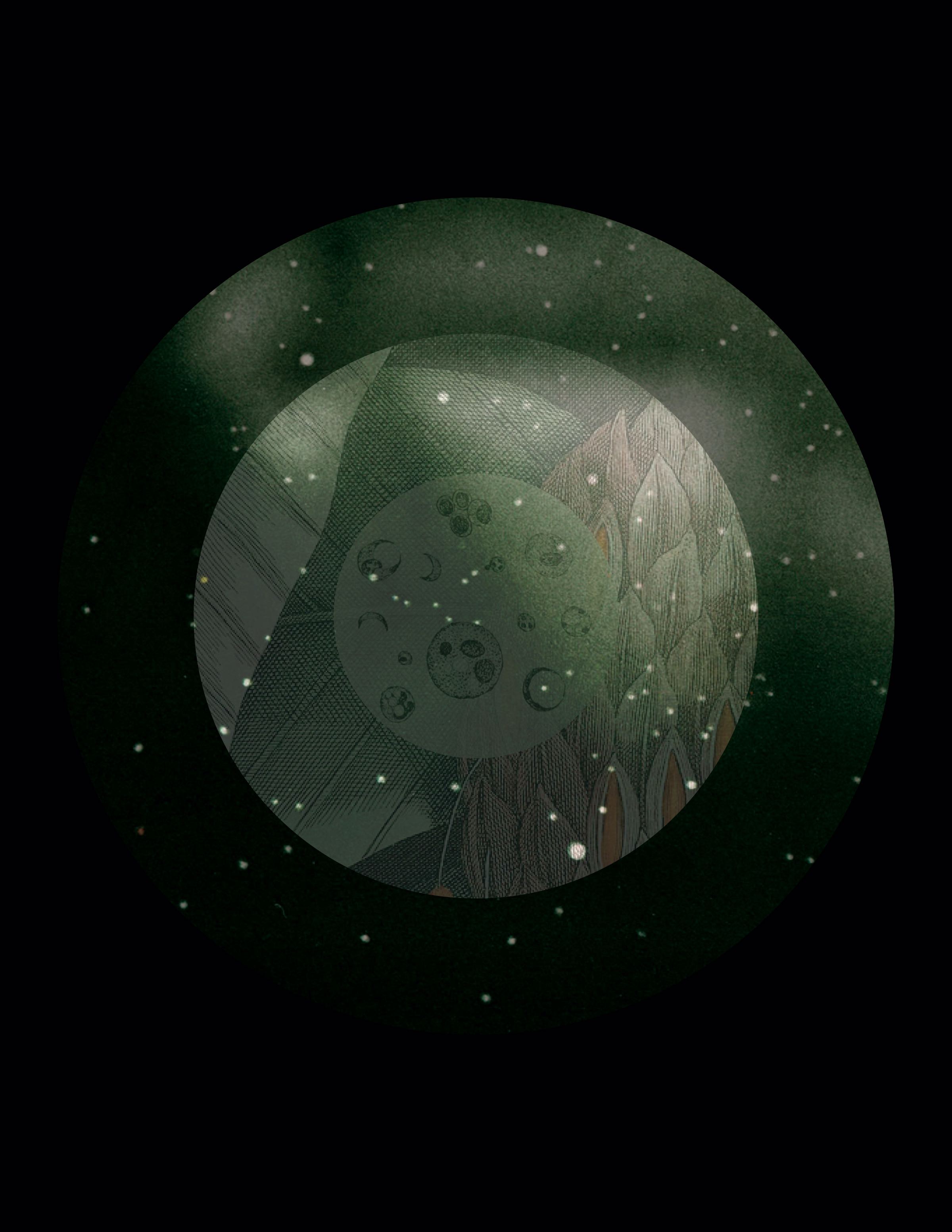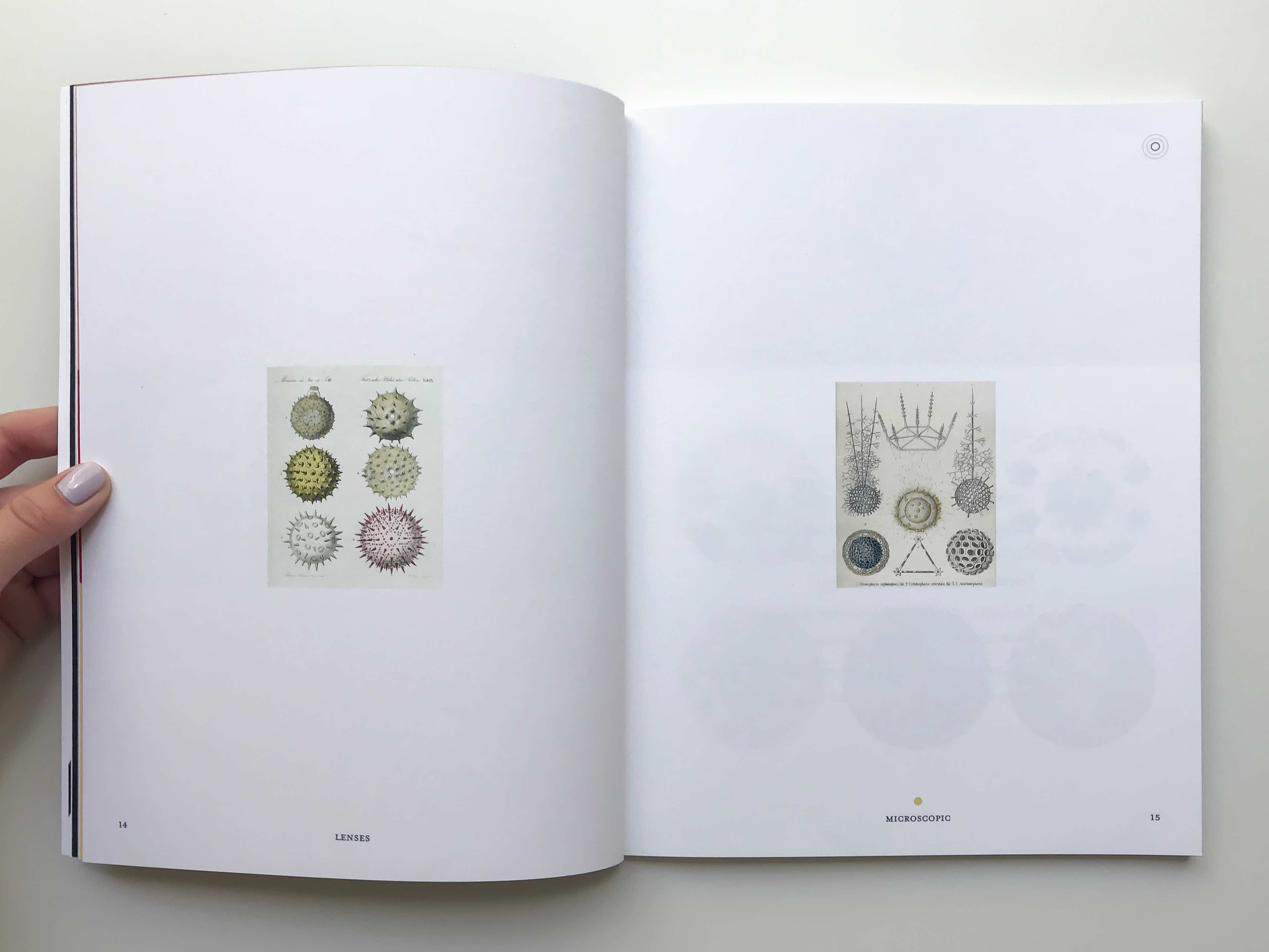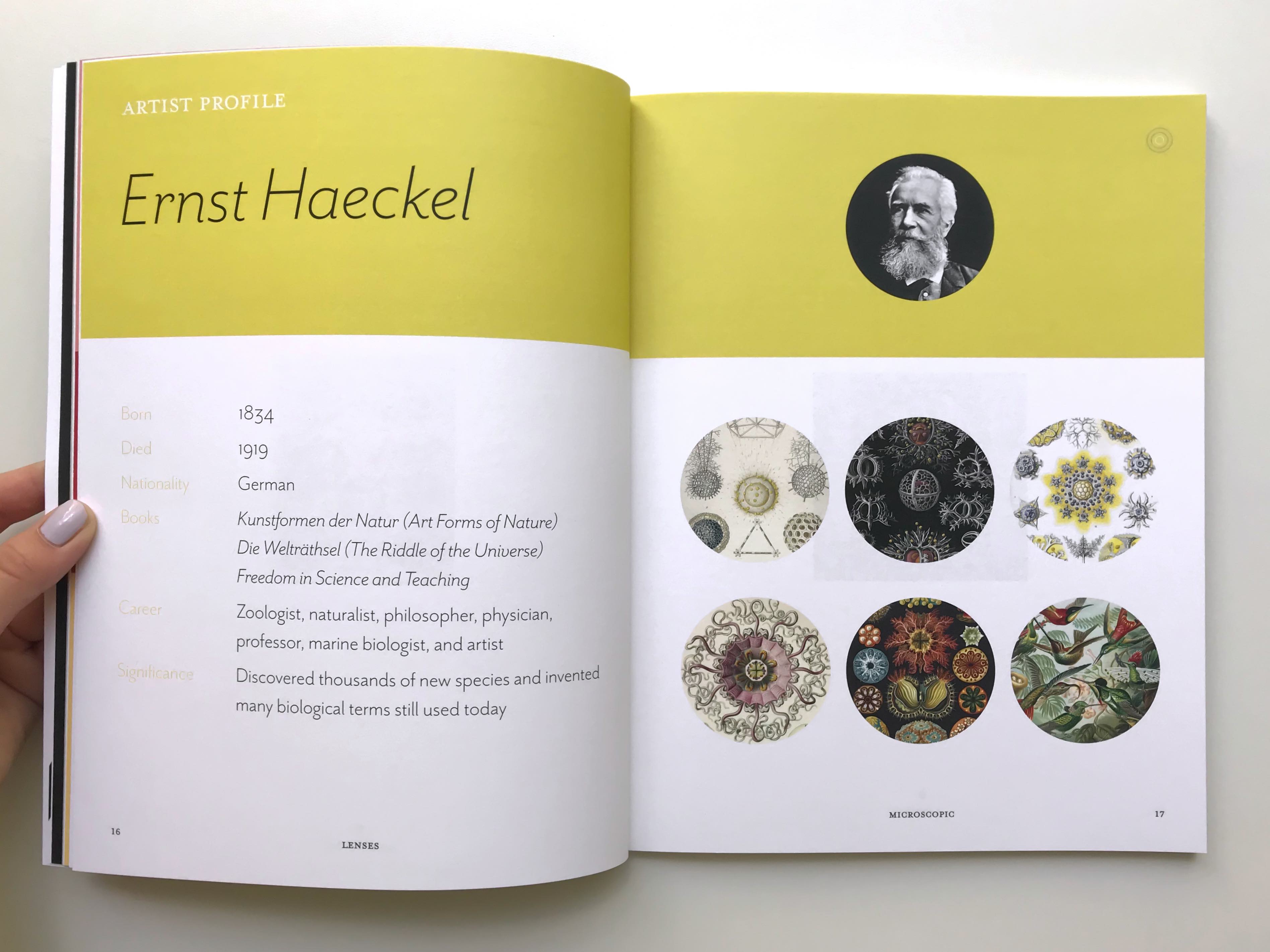Lenses of Scientific Illustration
Before photography, all scales of scientific discovery—from the microscopic to the astronomic—relied on scientific illustration. My goal in curating this broad collection is to showcase how historic scientific illustrations serve as not only a testament to discoveries of the past, but also a highly unique and nearly extinct style of art.
I divided the book into three sections: microscopic, macroscopic, and astronomic. Each section is delineated by its own margin size and type weight. I also created a circular motif that represents the lens through which we view each section (a microscope, the human eye, or a telescope). I stacked these lenses on the front cover, while the back cover mimics looking back through them.
I divided the book into three sections: microscopic, macroscopic, and astronomic. Each section is delineated by its own margin size and type weight. I also created a circular motif that represents the lens through which we view each section (a microscope, the human eye, or a telescope). I stacked these lenses on the front cover, while the back cover mimics looking back through them.

Front cover

Back cover
I created icons to represent each section based on the circular motif, which I placed on the top right corner of each image spread for easy reference.
 Icons
Icons

Each section divider represents its corresponding lens, matching the image on the cover. The images in the microscopic and astronomic circles are magnified versions of the images on the following pages to mimic looking through a microscope and telescope.



Each section has its own consistent vertical margin height: microscopic has the largest margins, macroscopic has smaller margins, and astronomic becomes full bleed.
 Microscopic spread
Microscopic spread
Macroscopic spread

Astronomic spread
I interspersed color spreads throughout the book to emphasize the vertical margins of each section.


One artist from each section receives an artist profile with more detailed information. Illustrations by featured artists are indicated by a corresponding dot of color on the footer of the page.


The end of the book provides an index of images with information about the artists, the books that contain the works, and the years in which the works were created.

Based on this book, I also created an animation that shows the increasing scale of images as they move through the three lenses. As they magnify, the animation slows to represent the expansive scale.
